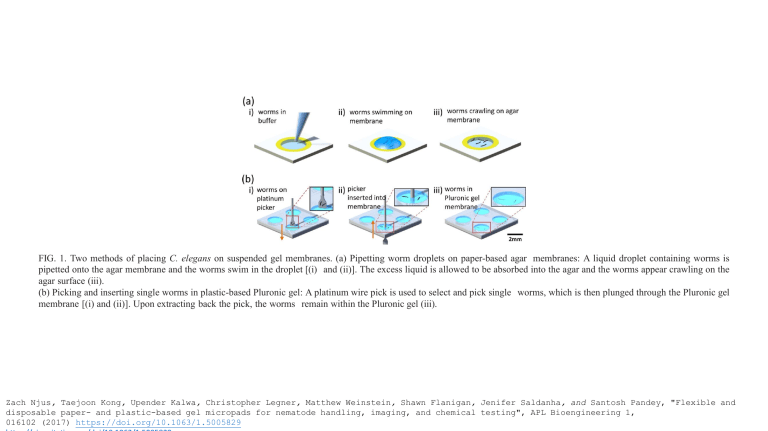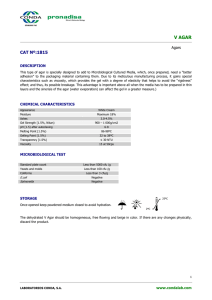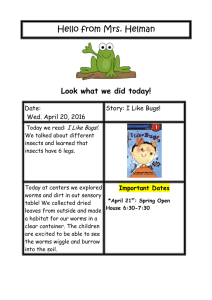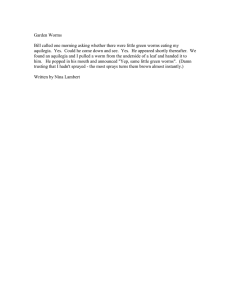
FIG. 1. Two methods of placing C. elegans on suspended gel membranes. (a) Pipetting worm droplets on paper-based agar membranes: A liquid droplet containing worms is
pipetted onto the agar membrane and the worms swim in the droplet [(i) and (ii)]. The excess liquid is allowed to be absorbed into the agar and the worms appear crawling on the
agar surface (iii).
(b) Picking and inserting single worms in plastic-based Pluronic gel: A platinum wire pick is used to select and pick single worms, which is then plunged through the Pluronic gel
membrane [(i) and (ii)]. Upon extracting back the pick, the worms remain within the Pluronic gel (iii).
Zach Njus, Taejoon Kong, Upender Kalwa, Christopher Legner, Matthew Weinstein, Shawn Flanigan, Jenifer Saldanha, and Santosh Pandey, "Flexible and
disposable paper- and plastic-based gel micropads for nematode handling, imaging, and chemical testing", APL Bioengineering 1,
016102 (2017) https://doi.org/10.1063/1.5005829
FIG. 2. Real-time worm tracking on paper and plastic-based devices. (a) The track of a worm crawling on a paper-based device is illustrated in red (i). Velocity plot of a
representative worm’s centroid location is shown over 3 min in M9 buffer
(ii). (b) The tracks of four worms swimming in four separate plastic-based devices are illustrated (i). Velocity plots of the four representative worms’ centroid locations are
shown over the course of 3 min in M9 buffer (ii).
Zach Njus, Taejoon Kong, Upender Kalwa, Christopher Legner, Matthew Weinstein, Shawn Flanigan, Jenifer Saldanha, and Santosh Pandey, "Flexible and
disposable paper- and plastic-based gel micropads for nematode handling, imaging, and chemical testing", APL Bioengineering 1,
016102 (2017) https://doi.org/10.1063/1.5005829
FIG. 3. Levamisole drug testing of C. elegans on suspended gel membranes. Here, a desired concentration of levamisole is prepared in M9 buffer and allowed to permeate into
the gel membrane. The centroid velocity of individual worms is tracked at real-time and averaged over the entire recording period. The percentage response is calculated by
normalizing the aver- aged centroid velocities from the experimental tests to those from the control tests. (a) Dose response of C. elegans crawl- ing on agar membranes in a
paper-based device. (b) Dose response of C. elegans swimming in Pluronic gel membranes in a plastic-based device.
Zach Njus, Taejoon Kong, Upender Kalwa, Christopher Legner, Matthew Weinstein, Shawn Flanigan, Jenifer Saldanha, and Santosh Pandey, "Flexible and
disposable paper- and plastic-based gel micropads for nematode handling, imaging, and chemical testing", APL Bioengineering 1,
016102 (2017) https://doi.org/10.1063/1.5005829
FIG. 4. Method to transfer C. elegans between two paper or plastic-based PADs. The worm population is to be trans- ferred from the red-colored membranes to the
“target” blue-colored membranes. (a) To transfer worms between two agar membrane devices, a drop of buffer is added to the target membrane (i). The paper substrate is
folded such that the red membrane having the worms is brought into contact with the target membrane [(ii) and (iii)]. After separating the two membranes, worms will
transfer to the target membrane (iv). (b) To transfer worms between two plastic-based devices with Pluronic gel membranes, the top plastic-based device with red
membranes (containing the worms) is aligned and lowered onto the bottom device with blue membranes [(i)–(iii)] until a physical contact is made. The top plastic device
is then removed, and the worms along with some of the gel transfer to the bottom plastic device having the blue membrane (iv)
Zach Njus, Taejoon Kong, Upender Kalwa, Christopher Legner, Matthew Weinstein, Shawn Flanigan, Jenifer Saldanha, and Santosh Pandey, "Flexible and
disposable paper- and plastic-based gel micropads for nematode handling, imaging, and chemical testing", APL Bioengineering 1,
016102 (2017) https://doi.org/10.1063/1.5005829
FIG. 5. Method to transfer C. elegans from paper or plastic-based PADs to an agar plate. The membranes are colored with a red food dye for visual ease. (a) The paperbased device having a worm population (i) is gently lowered onto the surface of the agar plate (ii). When the paper substrate is lifted upwards, its suspended agar membrane
detaches and is left on the agar plate (iii). The worms are now free to migrate on the agar plate. (b) The Pluronic gel membranes contain- ing worms (i) are lowered onto the
agar plate. Once the contact is made, the suspended membranes rupture and the worms are transferred to the agar plate (ii). The plastic substrate is removed, and the
worms are allowed to crawl over the agar plate (iii).
Zach Njus, Taejoon Kong, Upender Kalwa, Christopher Legner, Matthew Weinstein, Shawn Flanigan, Jenifer Saldanha, and Santosh Pandey, "Flexible and
disposable paper- and plastic-based gel micropads for nematode handling, imaging, and chemical testing", APL Bioengineering 1,
016102 (2017) https://doi.org/10.1063/1.5005829
FIG. 6. Simultaneous imaging of worms on different focal planes by z-stacking separate PADs. (a) The membrane devices are vertically stacked (spacing ¼ 2 cm) and
aligned to ensure the visibility of all membranes. Then, by manu- ally adjusting the focus of the microscope, different focal planes can be independently imaged. (b) Images
extracted from a video sequence taken as the focal plane of the microscope is changed from the upper membrane (yellow plane) through the middle plane (red plane) to the
lower membrane (blue plane). Two representative worms are highlighted where worm 1 is on the lower device and worm 2 is on the upper device. Initially, as we focus on
the upper device, worm 2 is clearly visible, while worm 1 appears blurred. When we focus to the middle of the two devices, both worms appear blurred. As the focus is now
changed to the lower device, “worm 1” (on the lower device) is clearly visible, while “worm 2” appears blurred.
Zach Njus, Taejoon Kong, Upender Kalwa, Christopher Legner, Matthew Weinstein, Shawn Flanigan, Jenifer Saldanha, and Santosh Pandey, "Flexible and
disposable paper- and plastic-based gel micropads for nematode handling, imaging, and chemical testing", APL Bioengineering 1,
016102 (2017) https://doi.org/10.1063/1.5005829
FIG. 7. Fabrication of suspended gel membranes on paper and plastic substrates. (a) Paper-based PADs: A wax pattern is printed on chromatography paper and melted on a
hot plate to create a hydrophobic barrier [(i) and (ii)]. A circular pat- tern is excised using a biopsy punch to create a cut hole (iii). The paper is lowered onto a 100 l droplet
of 2% liquid agar and gently lifted, resulting in an agar membrane in the cut hole [(iv) and (v)]. Besides agar, this droplet method also works for Pluronic gel. (b) Plastic-based
PADs: A plastic sheet is taped on both sides, and multiple circular patterns are excised using an automated design cutter to create cut holes [(i) and (ii)]. The excised plastic
sheet is vertically immersed into an 11.5% solution of Pluronic gel and removed, resulting in suspended membranes of Pluronic gel within the cut holes [iii) and (iv)].
Zach Njus, Taejoon Kong, Upender Kalwa, Christopher Legner, Matthew Weinstein, Shawn Flanigan, Jenifer Saldanha, and Santosh Pandey, "Flexible and
disposable paper- and plastic-based gel micropads for nematode handling, imaging, and chemical testing", APL Bioengineering 1,
016102 (2017) https://doi.org/10.1063/1.5005829
FIG. 8. Worm identification. (a) Original image of the plastic-based PAD with four suspended membranes, each housing a single worm. (b) Circular membranes found by the
circular Hough transform are illustrated in blue. Edges of the identified circles refined using the Active Contour Algorithm are shown in red. (c) Sections are segmented out
using an adaptive threshold technique with a window size of 100 x 100 pixels and a percentage of 90%. (d) Using a morphological filter, specific sections are removed that
do not fit within a certain threshold (area of 200–300 pixels; perimeter to area ratio of 0.5–1). Arrows point to the four worms identified after the last filtering step.
Zach Njus, Taejoon Kong, Upender Kalwa, Christopher Legner, Matthew Weinstein, Shawn Flanigan, Jenifer Saldanha, and Santosh Pandey, "Flexible and
disposable paper- and plastic-based gel micropads for nematode handling, imaging, and chemical testing", APL Bioengineering 1,
016102 (2017) https://doi.org/10.1063/1.5005829




